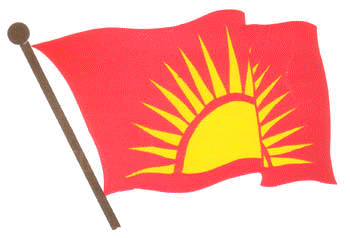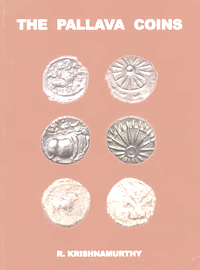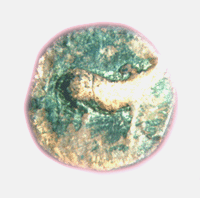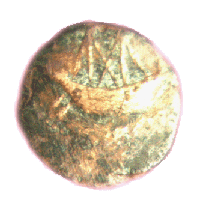Pallava
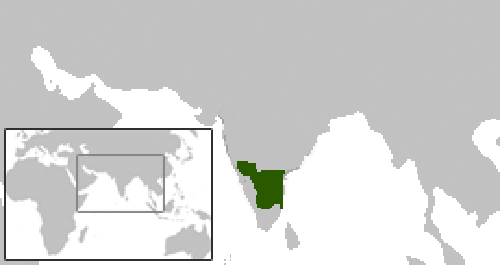
Pallava kingdom c.645 CE during
Narasimhavarman I
Origins
Religion
Pallava Chronology - Early Pallava - Later Pallavas - Kadava Kingdom
Pallava Architecture
The Pallava kingdom was an ancient South Indian kingdom. The Pallavas, feudatories of Andhra Satavahanas, became independent after their decline at Amaravati. They established their capital at Kanchipuram around the 4th century CE. They rose in power during the reign of Mahendravarman I (571 � 630 CE) and Narasimhavarman I (630 � 668 CE) and dominated the Telugu and northern parts of Tamil region for about six hundred years until the end of the 9th century.
Throughout their reign they were in constant conflict with both Chalukyas of Badami in the north and the Tamil kingdoms of Chola and Pandyas in the south and were finally defeated by the Chola kings in the 8th century CE.
Pallavas are most noted for their patronage of Dravidian architecture, still seen today in Mahabalipuram. Pallavas, who left behind magnificent sculptures and temples, established the foundations of classical Dravidian architecture. Chinese traveller Hiuen Tsang visited Kanchipuram during Pallava rule and extolled their benign rule.
Some sources[1] describe Bodhidharma, the founder of the Chan (Zen) school of Buddhism in China, as a prince of the Pallava dynasty, a contemporary of Skandavarman IV and Nandivarman I,[2] and the son of Simhavarman II.[3]
The word Pallava means bud or branch in Sanskrit. The word is rendered as Tondaiyar in Tamil language. The Pallava kings at several places are called Thondamans or Thondaiyarkon. The territory of the Pallavas is still known as Thondaimandalam literally meaning The region of Thondai in Tamil .
The Chola king Karikala Chola annexed the region now referred to as Tondaimandalam after overthrowing the Kurmubar sovereignity[4] and gave it to his valiant son Athondai Chakravarti[5]. The region henceforth came to be known after the king Athondai.
Thus the Pallavas were an offshoot of the Cholas[5] and the dynasty is named Pallava derived from the Sanskrit word Pallavam meaning bud or branch and refers to the separate branch of dynasty founded by the Karikala Chola's son Athondai Chakravarti[5].
There have been a number of other theories regarding the origin of the Pallavas. According to Dr Jouveau Dubreuil, the Pahlavas migrated from Persia to India and founded the Pallava dynasty of Kanchi. They first occupied Anarta and Konkan and later entered southern India via Kuntala or Vanavasa.
- "The Pallavas were immigrants from north, or properly speaking from Konkan, Tenugu and Anarta into Deccan. They came into south India through Kuntala or Vanvasa..." (Jouveau Dubreuil).
Venkayya notes:
- "The Pallavas of Kā�cīpuram must have come originally from Persia, though the interval of time which must have elapsed since they left Persia must be several centuries. As the Persians are generally known to (p.220) Indian poets under the name Pārasīka, the term Pahlava or Pallava must denote the Arsacidan Parthians, as stated by Professor Weber." (Venkayya 1907, p.219-220)
Dr V. A. Smith says:
- "It is possible that the Pallavas were not one distinct tribe or class but a mixed population composed partly of foreigners and partly of the Indian population but different in race from Tamils and taking their name from the title of an intruding foreign dynasty (Pahlava) which obtained control over them and welded them into an aggressive political power" (Early History of India, 1924, Dr V. A. Smith).
(ii) Yet another link between the Pahlavas of the North and the Pallava rulers of Kanchi may be found in a legend which, according to Victor Goloubew,[6] takes its origin from the Scythians and plays a paramount part in the lands penetrated by the Pallavas and their culture. The Nagi legend of the Scythians which is connected with legends in Tamil literature and Pallava copper-plates as well as the annals of Cambodia carries a special significance here.[7]
There are other opinions supporting their indigenous origins state that they were hereditary feudatory rulers under the Vakatakas.[8]
The Pallavas were followers of Sanatana Dharma. In line with the prevalent customs, some of the rulers performed the Aswamedha and other Vedic sacrifices. They had made gifts of lands to gods and Brahmins.
Later Mahendravarman I was initially patron of the Jain faith. Mahendravarman later re-converted to Hinduism under the influence of the Saiva saint Appar[9], with the revival of Hinduism during the Bhakti movement in South India.
Pallava Chronology
The rule of the Pallavas apparently starts as early as 275 CE, but their greatest epoch corresponds to the 7th and 8th century.[10]
Early Pallava
The history of the early Pallavas has not yet been satisfactorily settled. The Prakrit and the Sanskrit charters on which we base our knowledge of these early Pallavas merely mention the royal names, their non-political grants and nothing about their reign or their political achievements. The earliest documentation we have on the Pallavas is the three copper-plate grants.[11] All three belong to Skandavarman I and written in the Prakrit language.
Skandavarman seems to have been the first great ruler of the early Pallavas. He extended his dominions from the Krishna in the north to the Pennar in the south and to the Bellary district in the West. He performed the Aswametha and other Vedic sacrifices. At the beginning of their rule, Manchikallu, Mayidavoiu, Darsi and Ongolu were the centres of their activity. Kanchipuram gained prominence as the centre of their political and cultural activity by the second quarter of the fourth century CE.
Vishnugopa (350-355 CE), was defeated by Samudragupta around 350 CE. With Samudragupta's expedition, the Paliava eclipse set in.
In the reign of Simhavarman IV, who ascended the throne in 436 CE the fallen prestige of the Pallavas was restored. He recovered the territories lost to the Vishnukundins in the north up to the mouth of the Krishna. The early Pallava history from this period onwards is furnished by a dozen or so copper-plate grants. These are in the Sanskrit language. They are all dated in the regnal years of the kings.[12]
With the accession of Nandivarman (480-500 CE), the decline of the early Pallava family was seen. The Kadambas had their aggressions and even the headquarters of the Pallavas was occupied by them. In coastal Andhra the Vishnukundins established their ascendency. The Pallava authority was confined to Tondaimandalam.
With the accession of Simha Vishnu father of Mahendravarma I, probably in 575 CE, the glorious imperial Pallava phase begins in the south.
The following chronology is gathered from these three charters:[13]
- Simhavarman I 275 - 300 CE
- Skandavarman
- Visnugopa 350 - 355 CE
- Kumaravishnu I 350 - 370 CE
- Skandavarman II 370 - 385 CE
- Viravarman 385 - 400 CE
- Skandavarman III 400 - 436 CE
- Simhavarman II 436 - 460 CE
- Skandavarman IV 460 - 480 CE
- Nandivarman I 480 - 510 CE
- Kumaravishnu II 510 - 530 CE
- Buddhavarman 530 - 540 CE
- Kumaravisnu III 540 - 550 CE
- Simhavarman III 550 - 560 CE
The incursion of the Kalabhras and the confusion in the Tamil country was broken by the Pandya Kadungon and the Pallava Simhavishnu. The Pallava kingdom began to gain both in territory and influence over the South Indian peninsula. Pallavas exercised control over their southern neighbours of Cholas and Pandyas. But their history is marked by the continuous conflict with the Badami Chalukyas. Narasimhavarman I and Paramesvaravarman I were the kings who stand out with glorious achievements in both military and architectural spheres.
- Simhavishnu 555 - 590 CE
- Mahendravarman I 590 - 630 CE
- Narasimhavarman I (Mamalla) 630 - 668 CE
- Mahendravarman II 668 - 672 CE
- Paramesvaravarman I 672 - 700 CE
- Narasimhavarman II (Raja Simha) 700 - 728 CE
- Paramesvaravarman II 705 - 710 CE
- Nandivarman II (Pallavamalla) 732 - 796 CE
- Thandivarman 775 - 825 CE
- Nandivarman III 825 - 869 CE
- Aparajitha Varman 882 - 901 CE
During the thirteenth and the fourteenth centuries CE, a small principality of the Kadava dynasty came into brief prominence. These rulers claimed descent from the Pallavas. The notable rulers of this dynasty are Kopperunchinga I (reigned c.1216 - 1242 CE), and his son and successor Kopperunchinga II (c.1243 - 1279 CE). Together they extended the influence of their kingdom and played a major part in the ultimate demise of the Chola dynasty.
Pallavas were pioneers of south Indian
architecture. The earliest examples of
temples in the Dravidian style belong to the
Pallava period. The earliest examples of Pallava
constructions are rock-cut temples dating from 610 -
690 CE and structural temples between 690 - 900 CE.
The greatest accomplishments of the Pallava
architecture are the rock-cut temples at
Mahabalipuram. There are excavated pillared
halls and monolithic shrines known as rathas in
Mahabalipuram.
Nandivarman II built the
Shore Temple. Early temples were mostly
dedicated to
Shiva. The Kailasanatha temple in
Kanchipuram built by
Nandivarman is a fine example of the Pallava
style temple.
- ^ Other sources describe him as a Persian, see Bodhidharma article
- ^ Kamil V. Zvelebil (1987). "The Sound of the One Hand", Journal of the American Oriental Society, Vol. 107, No. 1, p. 125-126.
- ^ Graeme Lyall. Seon - The Buddhism of Korea.
- ^ Religion and Public Culture: encounters and identities in modern South Indi by John Jeya Paul, Keith Edward Yandell
- ^ a b c d e History of Tirupati: The Tiruvengadam Temple By T. K. T. Viraraghavacharya
- ^ Les legendes de le Nagi et de l'Apsaras, Bulletin de l'Ecole Francaise d'Extreme-Orient, Victor Goloubew
- ^ Administration and Social Life Under the Pallavas � 1938, pp 20, 25, 39, Cadambi Minakshi
- ^ See Durga Prasad, History of the Andhras up to 1565 A. D. , Nilakanta Sastri, K.A., A History of South India
- ^ Appar
- ^ "India:The Ancient Past", Burjor Avari, p.186
- ^ Now referred to as the Mayidavolu, Hirahadagalli and the British Museum plates - Durga Prasad, History of the Andhras up to 1565 A. D., P. G. Publishers, Guntur (1988)
- ^ The absolute chronology for these dates is derived from the Saka dates in the Jain manuscript on cosmology Lokavibhaga
-
^
See Nilakanta Sastry, K.A
History of South India (OUP)
reprinted 2000
References
- Durga Prasad, History of the Andhras up to 1565 A. D., P. G. Publishers, Guntur (1988)
- Nilakanta Sastri, K.A. (1955). A History of South India, OUP, New Delhi (Reprinted 2002).
- South Indian Inscriptions
- Divakar has written a recent novel - Vicithra cithan, dealing with the period of Narasimha pallava and him changing from jainism back to Hindusim and becoming a shivaite
